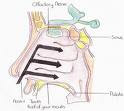If you have diabetes, follow these steps:
- Control your blood glucose.
- Brush and floss every day.
- Visit your dentist regularly. Be sure to tell your dentist that you have diabetes.
- Tell your dentist if your dentures (false teeth) do not fit right, or if your teeth and gums are sore.
- Quit smoking. Smoking makes gum disease worse. Your physician or dentist can help you quit.
Take time to check your mouth regularly for any problems. Sometimes people notice that their gums bleed when they brush and floss. Others notice dryness, soreness, white patches, or a bad taste in the mouth. All of these are reasons to call Drs. Bernstein & Auerbach, dentists in New City, NY. They can help you monitor your dental health in connection with your overall health and your diabetes.
Remember, good blood glucose control can help prevent mouth problems.










